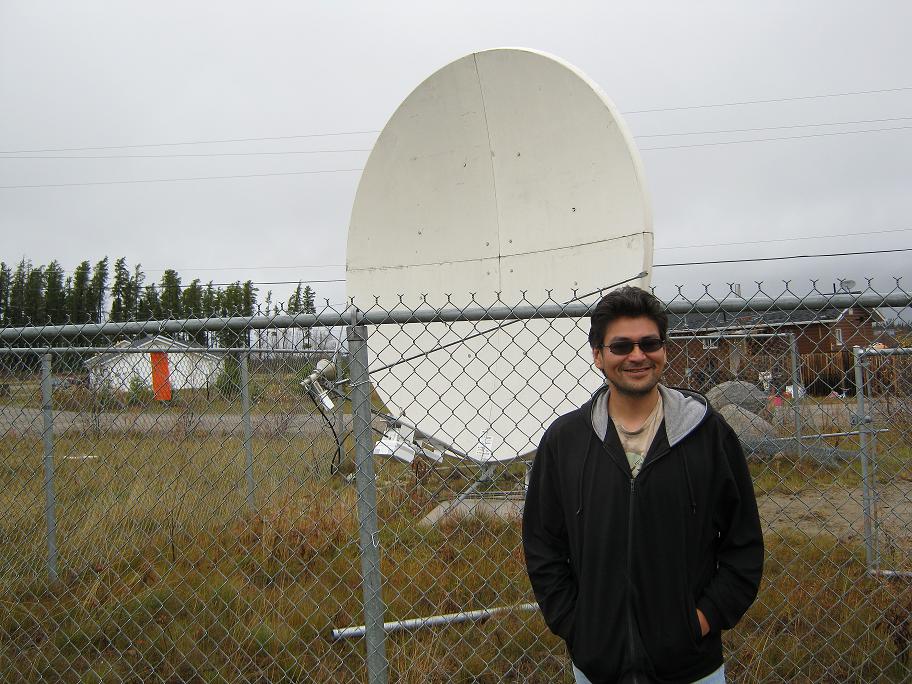
Slate Falls First Nation – Ontario
Monday, 30 January 2012, 11:52 AM
By Wes Angees, Band Technician, Slate Falls First Nation, Ontario, with Rob McMahon
Wes Angees won’t be out of a job any time soon. That’s because he’s the band technician for Slate Falls. He keeps the local phones running, connects people to the Internet and takes care of local networking. People are always asking him for more bandwidth. If a computer in the band office crashes, he’s the first person called.
“I know through the local PBX system on my computer when the phones are down,” he said. “I’ll go to someone’s house and they’ll see me standing at the door with a surprised look on their face. They say ‘the phone’s down’. I say, ‘I know, that’s why I’m here’. Everybody loves their phone and internet.”

Wes Angees beside the satellite dish that supplies connectivity to Slate Falls. The bandwidth supplied by the dish is managed by the NICSN partnership.
Slate Falls is a unique community. Until recently, aside from a winter road it was only accessible by plane. Now it has a year-round road that connects to regional centres like Sioux Lookout. It is also a lucky community – almost everyone has waterfront property. Last summer Slate Falls became a base for Ontario’s Ministry of Natural Resources. The government set up a communications centre there for forest firefighting in the area. There are also rumours of Sasquatch roaming the nearby woods.

Slate Falls First Nation
Slate Falls is also unique because people there connected to the Internet before they had regular telephones. Everyone used to line up for hours to use a single rotary pay phone. In fact, people still doesn’t use regular phones. All the phones in Slate Falls run over the Internet, not the public switched telephone network. This Voice-Over-IP network, along with other local Internet services, is owned and operated by the band. It costs $60 a month for both Internet and phone services.Slate Falls currently receives its connectivity through the Northern Indigenous Community Satellite Network. In the coming years it will be connected to high-speed fibre broadband through the Northwestern Ontario Broadband Expansion Initiative. Wes moved to the community in 2001 when his daughter was born. A lot of his work is technical: his day is filled with decisions about main amps, trunk amps, channels, fuses, and attenuators. He carries one backpack filled with tools. He has another with his laptop and computer gear. One more bag is contains splicing and cables. And a final bag, a heavy bag, is for when Wes wires up houses to the community’s cable system.

Wes standing in front of the community server racks
Wes remembers crawling under the old Keewaytinook Internet High School building to clean up the network cables – they looked like digital spaghetti. He once spent a couple of months re-wiring the band office so it was nice and neat. Before, the inside of the building was criss-crossed with blue wires.It has been a steep learning curve for the self-trained technician. Wes has been at the job for four years now. He previously worked as a janitor, a heavy equipment operator and a part-time mechanic.“There was lots of frustration at first. But once I started picking it up, everything started moving smoothly,” he said. “It took me about a year to figure everything out, but I always like a challenge!”
Find out more
Visit KNET’s Cable Plant Training webpage for more information on this kind of work.
